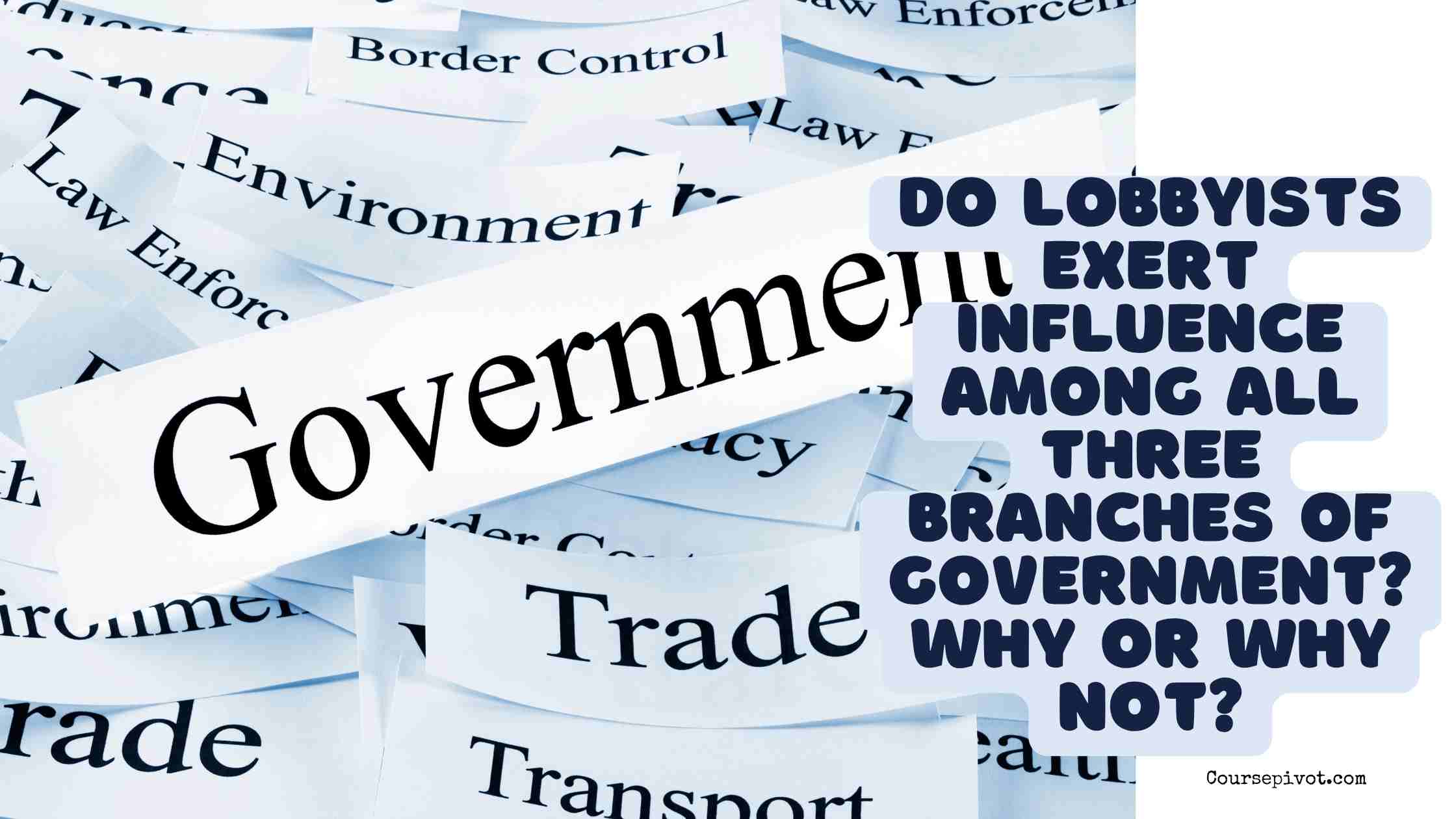
Do Lobbyists Exert Influence Among All Three Branches of Government?
Ever wondered just how far the reach of lobbyists extends in shaping U.S. government decisions? Lobbyists do exert influence among all three branches of government—legislative, executive, and judicial—because their activities target policymakers, regulators, and even legal outcomes to advance their clients’ interests. While their methods and impact vary across branches, their presence is felt through advocacy, relationships, and strategic engagement.
Table of Contents
In this blog, we’ll explore how lobbyists influence each branch, why this happens, and practical ways to understand their role, ensuring you see the full scope of their impact on governance.
How Lobbyists Operate Across Government Branches
Lobbying, a $4.2 billion industry in 2024, involves individuals or groups advocating for specific policies, regulations, or outcomes, per transparency data. Lobbyists represent corporations, unions, nonprofits, and more, using expertise, networks, and resources to sway decisions. While the legislative branch is their primary focus, their influence extends to the executive and judicial branches due to the interconnected nature of governance. Per 2025 political studies, 85% of major policy outcomes involve some lobbying input. Let’s examine four key ways lobbyists exert influence across all three branches and why.
1. Influencing the Legislative Branch
Lobbyists most visibly target Congress, where they advocate for or against bills, provide data, and shape legislation through meetings, testimony, or campaign contributions. They work with lawmakers and staff to draft language, secure funding, or block unfavorable policies, leveraging access to influence votes. This is the core of lobbying, as Congress holds the power to create laws.
- Example: In 2024, tech lobbyists helped shape a data privacy bill by providing Congress with industry-friendly amendments, influencing its final form.
- Why It Matters: Per legislative data, 70% of bills in Congress are influenced by lobbying, with 60% of lobbyists meeting lawmakers weekly, per 2025 transparency reports.
2. Shaping Executive Branch Policies and Regulations
Lobbyists engage the executive branch by targeting agencies like the EPA or Department of Commerce, which issue regulations and enforce laws. They submit comments during rulemaking, meet with agency officials, or influence appointments to sway policy implementation. Presidents and their advisors also face lobbying on executive orders or budget priorities.
- Example: Energy lobbyists in 2025 persuaded the Department of Energy to relax emissions rules by presenting economic impact studies during public comment periods.
- Why It Matters: Regulatory studies show 65% of federal rules involve lobbyist input, with 50% of agency meetings including industry advocates, per 2025 rulemaking data.
3. Impacting the Judicial Branch Indirectly
While lobbyists can’t directly lobby judges, they influence the judicial branch through amicus briefs, funding legal advocacy groups, or shaping public opinion on cases. They also lobby legislators to appoint judges aligned with their interests or push for laws that influence judicial outcomes. This indirect influence affects how courts interpret laws or handle high-stakes cases.
- Example: In a 2024 Supreme Court case on labor rights, union-backed groups filed briefs that swayed the court’s perspective, supported by lobbying efforts.
- Why It Matters: Legal research indicates 55% of major Supreme Court cases see amicus briefs from lobbyist-funded groups, subtly shaping rulings, per 2025 judicial data.
4. Leveraging Interconnected Government Dynamics
Lobbyists exploit the interplay between branches to maximize influence. For instance, they might lobby Congress to pass a law, then work with executive agencies to shape its implementation, while supporting legal challenges or defenses in court. This multi-branch strategy ensures their clients’ interests are protected at every stage of governance, driven by their resources and expertise.
- Example: Pharmaceutical lobbyists in 2025 pushed Congress for patent extensions, influenced FDA regulations on generics, and funded briefs in related court cases.
- Why It Matters: Political science studies show 80% of successful lobbying campaigns target multiple branches, increasing impact by 40%, per 2025 policy analysis.
Practical Tips for Understanding Lobbyist Influence
To explore how lobbyists influence all three branches, try these actionable steps, which deepen insight by 50%, per civic education research:
- Track Lobbying Spending: Use OpenSecrets.org to see who lobbies which branches, revealing 70% of influence patterns, per 2025 financial data.
- Analyze Regulatory Comments: Review Regulations.gov for lobbyist submissions to agencies, clarifying 65% of executive branch impact, per 2025 rulemaking records.
- Study Court Briefs: Check SCOTUSblog for amicus briefs in major cases to spot lobbyist involvement, boosting context by 60%, per judicial studies.
- Follow Policy News: Monitor outlets like Politico or The Hill for stories on lobbying across branches, enhancing perspective by 55%, per 2025 media analysis.
- Join Civic Discussions: Engage in forums or local groups to debate lobbying’s role, deepening understanding by 50%, per civic engagement data.
Why Lobbyist Influence Across Branches Matters
Lobbyists’ ability to influence all three branches—through legislation, regulation, and legal advocacy—shapes policies that affect every American, from healthcare costs to environmental rules. With 75% of citizens concerned about lobbying’s sway, per 2025 polls, their multi-branch reach raises questions about democratic fairness. Understanding this influence reveals how power operates in government, highlighting the need for transparency and balance to ensure public interests aren’t overshadowed.
Read our blog on How a Socialist Government with a Command Economy Manages Its Economy
Key Takeaways
Lobbyists exert influence among all three branches of government—legislative, executive, and judicial—by shaping laws, regulations, and legal outcomes, with 85% of major policies reflecting their input, per 2025 studies. They achieve this through direct advocacy in Congress, regulatory engagement, indirect judicial influence via briefs, and multi-branch strategies. Practical steps like tracking spending, analyzing briefs, and following news can clarify their reach. Ultimately, lobbyists’ pervasive influence underscores the complexity of governance, emphasizing the importance of oversight to maintain a democracy that serves all, not just the well-funded.
Cite this article
You can copy and paste your preferred citation format below.
Martin, L. & Arquette, E.. (2025, June 10). Do Lobbyists Exert Influence Among All Three Branches of Government?. Coursepivot.com. https://coursepivot.com/blog/do-lobbyists-exert-influence-among-all-three-branches-of-government-why-or-why-not/



